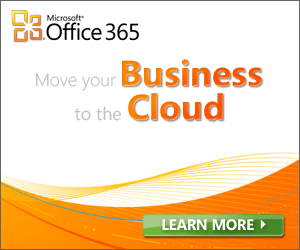what is the cloud?
“The cloud” is a friendly way of describing web-based services that are hosted outside of your organization. When you use cloud-based services, your IT infrastructure resides off your property (off-premises), and is maintained by a third party (hosted), instead of residing on a server at your home or business (on-premises) that you maintain. Many services you use every day are a part of the cloud— everything from web-based email to mobile banking and online photo storage. Because this information is located online or “in the cloud,” you can access it virtually anywhere, from a PC, tablet, mobile phone, or other device with an Internet connection.
What does it mean to "move to the cloud"?
A move to the cloud can involve transferring or replacing some or all of your office-based or home-based software, storage, or infrastructure systems with web-based services. For instance, if you use disparate onsite or online servers and services for file sharing and storage, email communication, web conferencing, or other business productivity needs, your organization could choose to transfer some or all of your IT infrastructure to the cloud or replace it with cloud-based services in order to improve data organization and collaboration.
Office 365 consolidates many business productivity services into a single cloud-based solution that you can choose to run in a way that works best for your business: on-premises, as a hosted service, or as a combination of on-premises and a hosted service. Office also 365 works well with most current versions of Office or comes with the latest version, and it provides business-class email, file sharing, conferencing, and much more.
Moving to the cloud allows you to take advantage of subscription-based software as a service (SaaS) products. Instead of installing software on each computer in your organization, keeping them all updated, and buying new versions of the product, you can buy a subscription to a SaaS product and be assured that you always have the latest features and capabilities of the software package, with no maintenance required on your part, for a low monthly fee. Office 365 is an example of SaaS.
What are the advantages of moving to the cloud?
Transitioning to the cloud offers numerous benefits, ranging from costs savings and increased productivity to disaster recovery.
• Collaborate and share information more easily: Moving to cloud-based services enables your employees to interact more efficiently and access information from nearly anywhere, on many types of devices, which increases their productivity.
• Protect sensitive data: Using cloud-based services contributes to your piece of mind, because if your equipment becomes damaged, lost, or stolen, your sensitive data remains protected and available. Cloud services such as Office 365 often offer multilayered security, proactive monitoring, and access restriction.
• Reduce cost and resource strain: Automatic security and software updates in cloud-based services enable your business to save both the time and money that are required when you have to maintain an onsite infrastructure.


